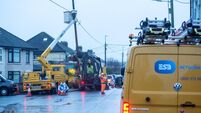Public can vote on location of broadband installations
The department’s website - www.broadband.gov.ie - invites the public to influence the location of new broadband installations by registering their vote to have the service extended to their area.
But, although the facility has been available since last February, only 2,339 votes were received during the first three months and the Department concedes this is probably because most people do not know it exists.













